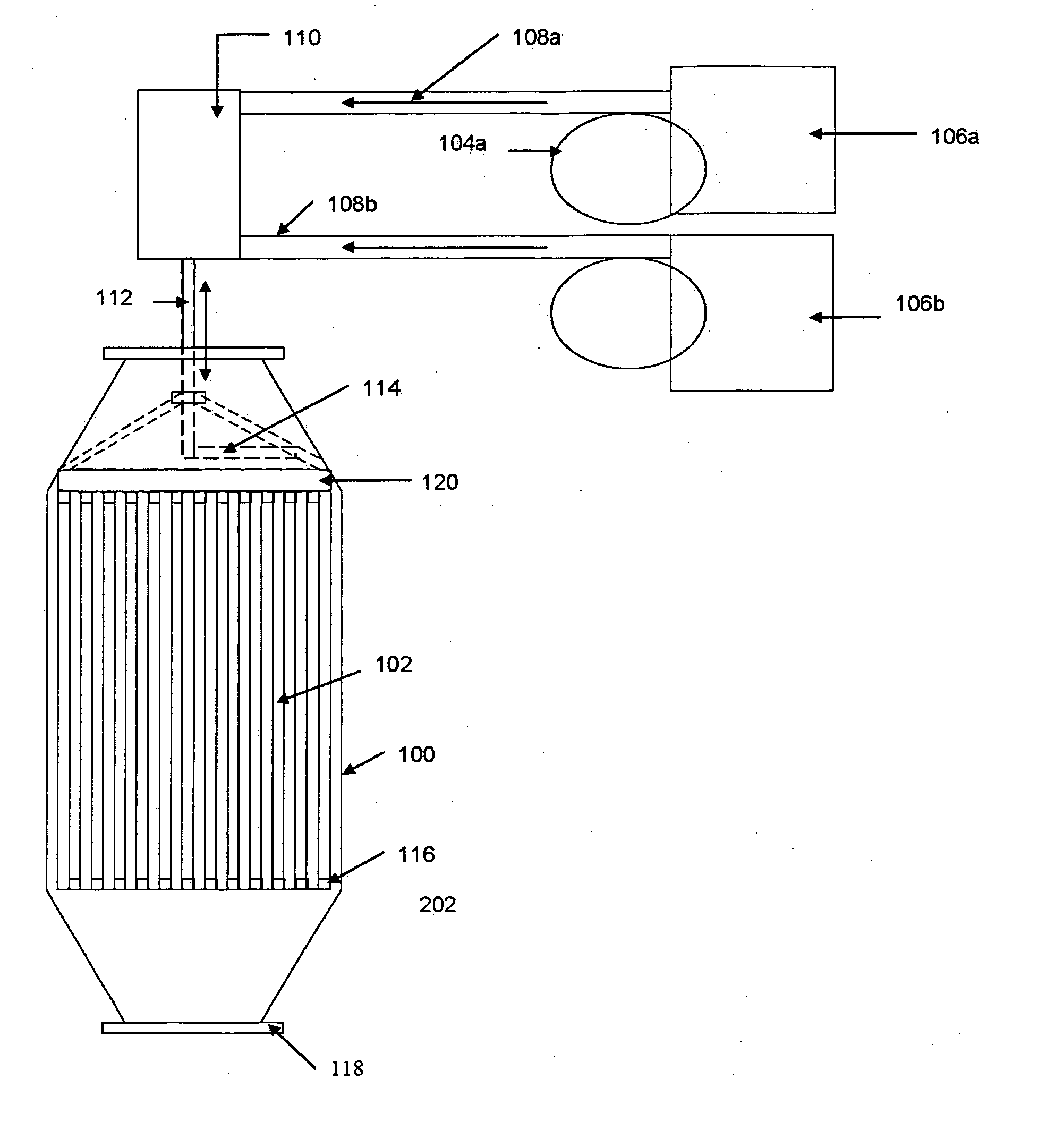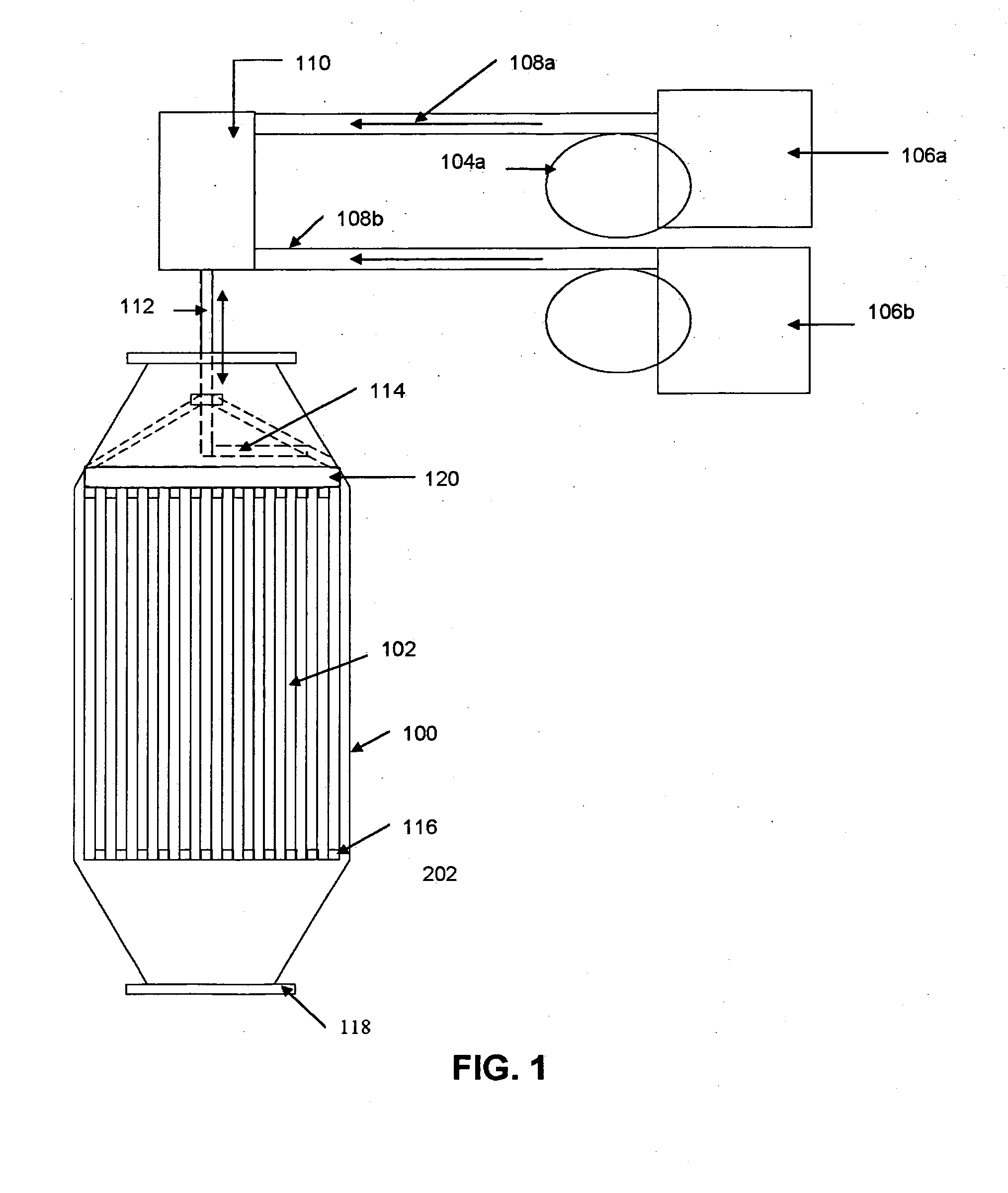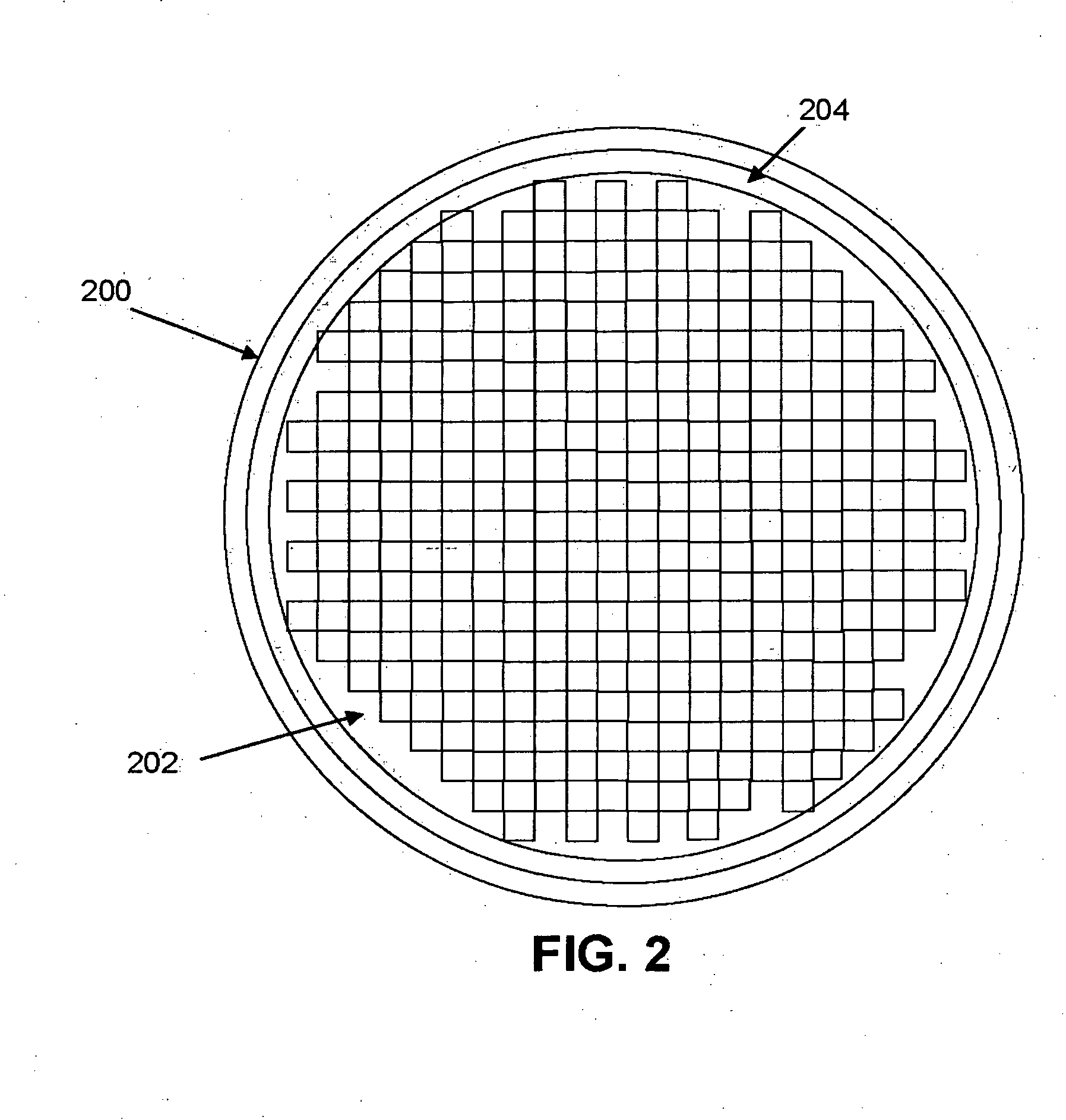Method and system for removing ash from a filter
- Summary
- Abstract
- Description
- Claims
- Application Information
AI Technical Summary
Benefits of technology
Problems solved by technology
Method used
Image
Examples
example 1
[0064]Ash was obtained from Detroit Diesel Company, which had the composition shown in Table 1.
TABLE 1ElementSource of ElementWt %KK2O0.18NaNa2O1.10AlAl2O32.16CaCaO25.0CrCr2O30.35CuCuO0.20FeFe2O34.61MgMgO2.22MnMnO20.10MoMoO30.05NiNiO0.15PP2O523.5SiSiO22.89ZnZnO12.2ZrZrO20.19
[0065]Filters that were tested were Corning Dura Trap® CO filters. Each filter was manually loaded with the ash composition, and then placed in an oven at varying temperatures to “bake” the ash onto the filter, similar to conditions that would occur in actual operation. After 1 hour, the filters were removed from the oven and air-cleaned at 100 psi pressure. The results of baking 10 different ash-coated filters at different temperatures are indicated in FIG. 4. The results indicate that the higher the temperature at which the filters are baked, the greater the ash retention and thus the less effective air-cleaning is.
example 2
[0066]A screening experiment was performed in which a sample of the ash was placed in a beaker and solutions of varying pH (including de-ionized (DI) water) were poured over the ash and into the beaker. Over various periods of time, the beakers were visually observed for color changes to the initially clear solution. The results of varying pH and times are shown in Table 2.
TABLE 2TimepH = 1pH = 2pH = 3pH = 4pH = 5pH = 6DI waterpH = 12 5 min32000000 45 min53100000125 min54300000Maximum color change = 5No color change = 0
[0067]Based on the results shown in Table 2, pH 3 can be effective to break down an ash aggolomerate. A pH of less than 3 is even more effective.
example 3
[0068]A Corning Dura Trap® CO filter was loaded with ash and then fired at 900° C. for one hour. The fired filter was air-cleaned using 100 psi air. Following air-cleaning, the filter was placed into a container, and a nitric acid solution was poured over the filter (approx. 1500 ml of solution) and soaked for a predetermined period of time. The procedure was performed at pH=1 and pH=3, and using DI water, for varying time periods. After soaking, the filter was water-rinsed. The results are shown in FIG. 5. The figure shows the impact of pH and time on ash removal. Soaking at pH=1 for 5 minutes was sufficient to remove around 80% of the ash that remained after air-cleaning. Additional soaking time did not significantly increase ash removal.
PUM
| Property | Measurement | Unit |
|---|---|---|
| Temperature | aaaaa | aaaaa |
| Time | aaaaa | aaaaa |
| Length | aaaaa | aaaaa |
Abstract
Description
Claims
Application Information
 Login to View More
Login to View More - R&D
- Intellectual Property
- Life Sciences
- Materials
- Tech Scout
- Unparalleled Data Quality
- Higher Quality Content
- 60% Fewer Hallucinations
Browse by: Latest US Patents, China's latest patents, Technical Efficacy Thesaurus, Application Domain, Technology Topic, Popular Technical Reports.
© 2025 PatSnap. All rights reserved.Legal|Privacy policy|Modern Slavery Act Transparency Statement|Sitemap|About US| Contact US: help@patsnap.com



